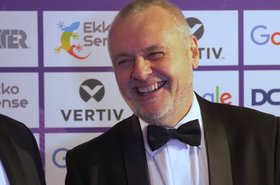The rows of servers that make up a data center generate massive amounts of heat. If the equipment gets too hot, it shuts down to protect itself, causing data center failure – a nightmare for all concerned.
Current data center trends show a significant increase in high-performance computing to support artificial intelligence, machine learning and similar applications. At the same time, advanced processor design is increasing chip densities, like with GPU processors. In extreme cases, we’re seeing 30-60kW racks housing ultra-high performance and high-powered servers.
These demands by Big Data, Internet of Things and edge computing are driving up data center heat density, leading to increased risk for outages if not carefully managed.
This situation has created a need for innovative approaches to thermal management, including radical moves like liquid cooling. In fact, direct liquid cooling at the chip - meaning the processor or other components are partially or fully immersed in a liquid for heat dissipation - is becoming a viable solution. Another area of innovation in thermal management is extreme water-free cooling, which is an increasingly popular alternative to traditional chilled water.
Before adopting such innovative cooling solutions, data center operators need to examine their existing cooling infrastructure and determine opportunities for energy savings. By viewing real-time energy consumption and collecting historical energy consumption patterns, experts can provide the best assessment to cut down on energy spending. The overall objective is to be able to optimize the cooling capacity and manage the airflow within the data center.
Here are five steps towards achieving a highly efficient data center.
Step One: Make an early move on optimization
Each area of the data center facility must be assessed by a data center professional. Key areas to be measured include lighting, cooling, power distribution units, other servers, processors, server power supply, UPS, storage, communication equipment and switchgear and transformers.
Step Two: Measure the data
The information gathered from the assessment in Step One will be analyzed by the data center professional, including percent of IT capacity, power metering, precision air conditioning unit (PACU) redundancy and hot/cold aisle configuration.
The analysis will give a professional review of the data center performance.
Step Three: Analyze the facts
Here are key areas that can be addressed to reduce energy costs:
- Metering and verification - metering/monitoring provides base line pPUE (mechanical Power Usage Effectiveness) of “before and after” the optimization process; it also provides real time and historical kWH consumption.
- Air flow management (Under the floor, within the rack, hot and cold aisle configuration, return air)
- Computer Room Air Conditioning unit optimization – recommissioning of CRAC units, controlling air temperature and recalibrating sensors
- Identifying hot spots – Utilizing thermal scanning to identify and eliminate hot air intake
Step Four: Improve the data center design
Some basic actions to be taken, that will contribute to energy savings and data center efficiency include:
- Identify different stress points.
- Consider different air flow management as needed (ie. containment, intelligent controls and economization)
- Regulate temperature (hot aisle/cold aisle rack arrangement and sealing cooling gaps on the data center floor)
Step Five: Enjoy the results
The optimization process detailed above will ensure that the results are what was anticipated based on budget, requirements and expectations.
Multiple benchmarks have consistently shown that the actions detailed above have delivered significant energy savings between 30 percent and 50 percent on cooling costs and reduced 50 overall facility power costs by between 10 percent and 25 percent.





